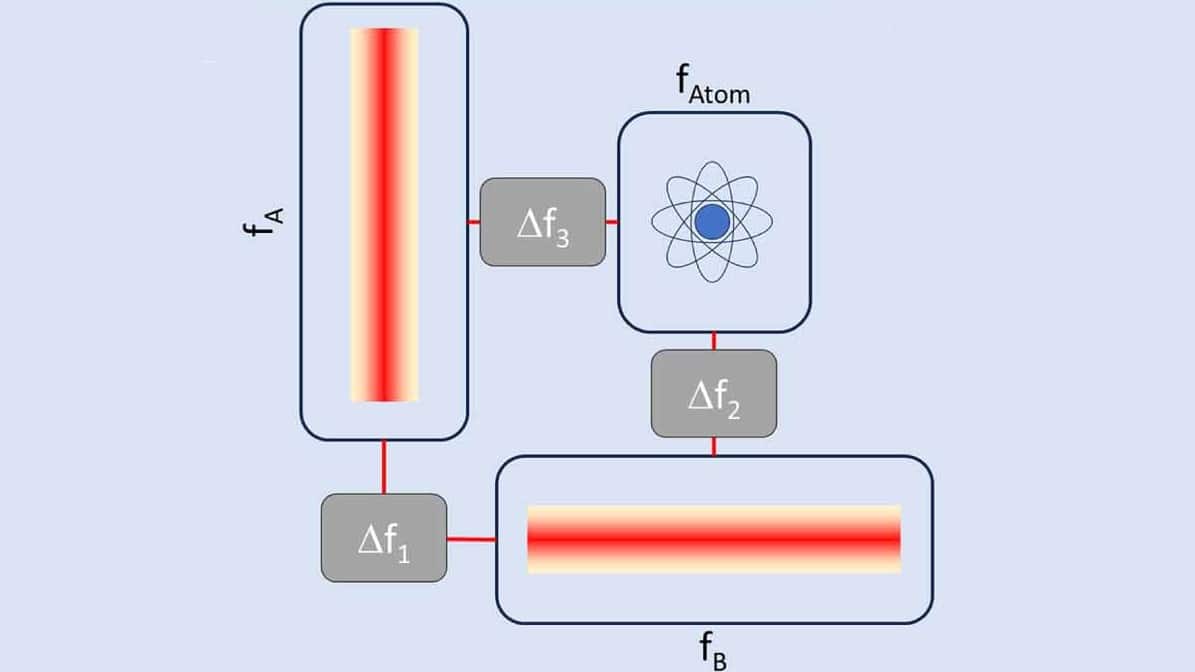Science
New Technology Could Revolutionize Detection of Gravitational Waves

A team of researchers in the UK has proposed a novel method to detect gravitational waves (GWs) in the milli-Hz frequency range, potentially expanding the horizons of astrophysical research. This breakthrough leverages existing technology through a network of optical cavities, setting the stage for astronomers to investigate gravitational ripples in space-time at frequencies between 10−5 Hz and 1 Hz.
GWs were first detected about a decade ago, with notable observations made by the LIGO, Virgo, and KAGRA observatories, which have been successful in identifying waves produced by merging black holes and neutron stars. These detectors primarily operate in the 10 Hz to 30 kHz frequency range. Additionally, pulsar timing arrays have had some success at nanohertz frequencies. Despite these advancements, the milli-Hz band remains largely unexplored, which is expected to include signals from binary systems of white dwarfs, neutron stars, and stellar-mass black holes, many of which are located within our own Milky Way galaxy.
Several projects are underway to investigate these frequencies, including the space-based interferometers LISA, Taiji, and TianQin, as well as satellite-borne networks featuring ultra-precise optical clocks. However, these initiatives are still several years from completion. Contributing to this effort is the QSNET collaboration, part of the UK’s Quantum Technology for Fundamental Physics (QTFP) programme.
“The QSNET project was a network of clocks designed to measure the stability of fundamental constants,” said Giovanni Barontini from the University of Birmingham. “This programme fostered collaboration among different physics communities that typically do not interact, including quantum physicists, technologists, high-energy physicists, and astrophysicists.” Although QTFP concluded this year, Barontini and his colleagues achieved significant progress in demonstrating the detection of milli-Hz GWs using optical cavities.
Ultrastable optical cavities work by allowing light at specific resonant frequencies to bounce between two opposing mirrors. When light generated by a specific atomic transition enters the cavity, it creates a highly precise frequency that functions like an exceptionally stable clock. Barontini explained, “Ultrastable cavities are a crucial component of modern optical atomic clocks. We demonstrated that they possess the sensitivity necessary to operate as ‘mini-LIGOs’ for detecting gravitational waves.”
When a gravitational wave passes through an optical cavity, the spacing between its mirrors remains unchanged. However, the QSNET findings indicate that milli-Hz GWs influence the phase of light within the cavity. This observation suggests that current optical cavities can detect these effects. According to team member Vera Guarrera, “Techniques from precision measurement with cold atoms can be adapted for gravitational-wave detection. This integration reveals compact optical resonators as viable tools for probing the milli-Hz band, complementing existing methodologies.”
The proposed detection system consists of two optical cavities positioned at 90° to each other, each operating at different frequencies, alongside an atomic reference at a third frequency. The phase shift induced by a passing gravitational wave is detected through changes in the interference patterns of the three frequencies. The researchers recommend linking multiple detectors to form a global ground-based network capable of not only detecting GWs but also locating their sources in the sky.
By utilizing established technology, the researchers aim to usher in a new era of GW detection in the milli-Hz range, potentially ahead of many current projects. “This detector will allow us to evaluate astrophysical models of binary systems in our galaxy, investigate mergers of massive black holes, and even search for stochastic backgrounds from the early universe,” noted Xavier Calmet from the University of Sussex.
Barontini expressed hope that this research will motivate the development of a global network of sensors to explore this new frequency band, which could yield numerous discoveries, particularly from within our own galaxy.
The findings of this research are detailed in the journal Classical and Quantum Gravity.
-

 Entertainment1 month ago
Entertainment1 month agoAnn Ming Reflects on ITV’s ‘I Fought the Law’ Drama
-

 Entertainment2 months ago
Entertainment2 months agoKate Garraway Sells £2 Million Home Amid Financial Struggles
-

 Health1 month ago
Health1 month agoKatie Price Faces New Health Concerns After Cancer Symptoms Resurface
-

 Entertainment1 month ago
Entertainment1 month agoWhere is Tinder Swindler Simon Leviev? Latest Updates Revealed
-

 Entertainment2 months ago
Entertainment2 months agoKim Cattrall Posts Cryptic Message After HBO’s Sequel Cancellation
-

 Entertainment1 month ago
Entertainment1 month agoCoronation Street’s Carl Webster Faces Trouble with New Affairs
-

 Entertainment2 months ago
Entertainment2 months agoMasterChef Faces Turmoil as Tom Kerridge Withdraws from Hosting Role
-

 Entertainment3 months ago
Entertainment3 months agoSpeculation Surrounds Home and Away as Cast Departures Mount
-

 World1 month ago
World1 month agoCole Palmer’s Mysterious Message to Kobbie Mainoo Sparks Speculation
-

 Entertainment1 month ago
Entertainment1 month agoITV’s I Fought the Law: Unraveling the True Story Behind the Drama
-

 Entertainment4 weeks ago
Entertainment4 weeks agoCaz Crowned Winner of The Great British Sewing Bee, Overjoyed by Triumph
-

 Entertainment2 months ago
Entertainment2 months agoAldi Launches Cozy Autumn Fragrance Range Ahead of Halloween





















